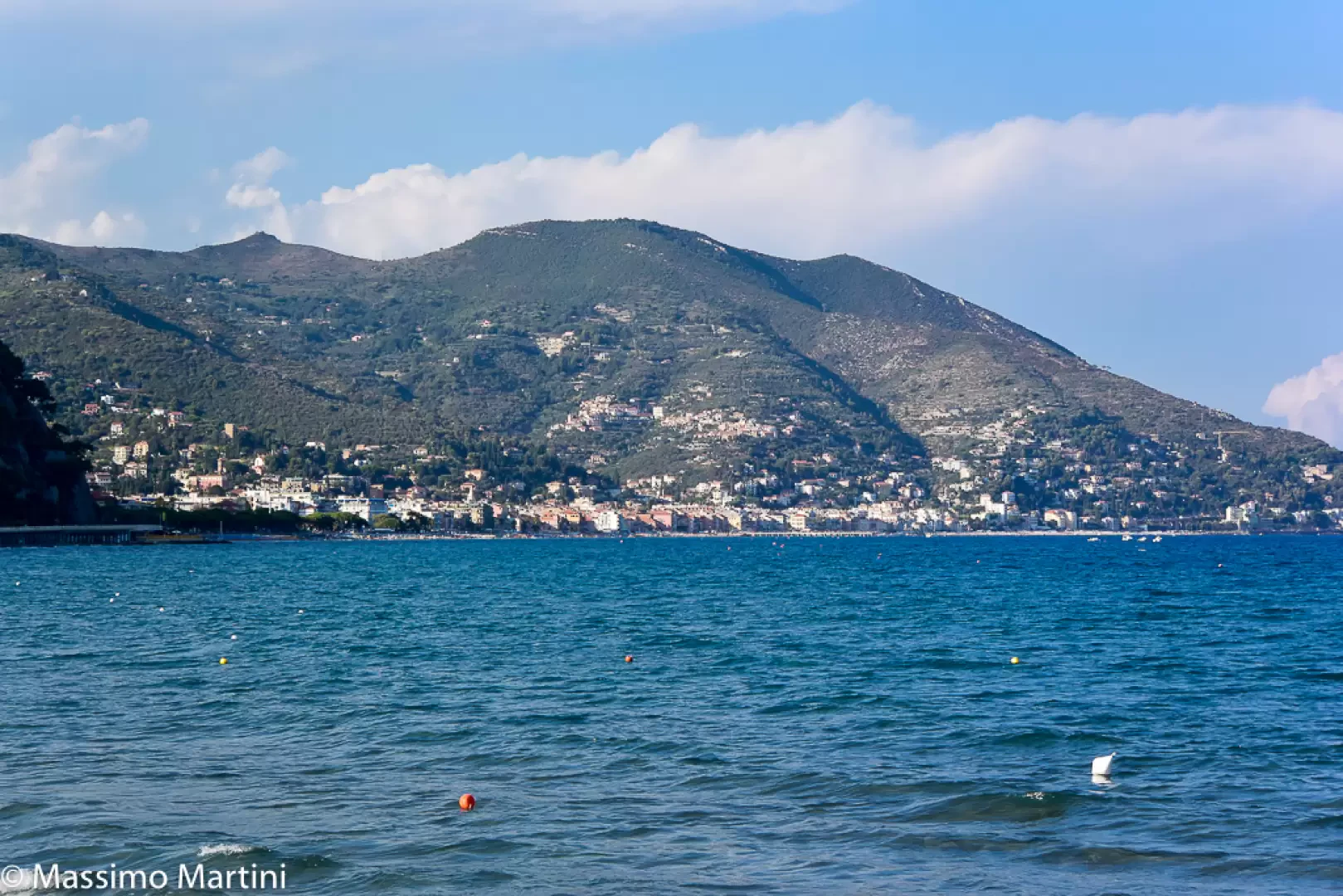Alassio

Access
Alassio is easily accessible by car via the motorway (exit Albenga), about 80 km from Genoa and 150 km from Nice. The railway station, located on the Genoa-Ventimiglia line, provides regular connections with the Riviera and major Italian cities. Genoa Airport (90 km) is the nearest airport, while Nice Airport provides international connections. The local bus network connects Alassio to the nearby towns of the Riviera di Ponente on a daily basis.
Introduction
Located along the Riviera di Ponente, Alassio is one of the most emblematic locations in western Liguria. The town lies in the province of Savona, in the centre of a wide inlet bounded to the east by Capo Santa Croce and to the west by the promontory of Capo Mele, where hills covered with olive groves and vineyards slope gently down to the sea. The urban layout is largely developed along the coastal strip, with the famous 'Budello' - the characteristic narrow, paved caruggio - marking the heart of the historic centre, surrounded by Art Nouveau palaces, pastel-coloured Ligurian houses and modern beach facilities. The natural environment, varied and harmonious, is dominated by the profile of Mount Tirasso, where the Natural Park of the same name preserves lush Mediterranean vegetation and ancient cultivated terraces. The combination of sea, hills and rural centres such as Moglio and Solva defines a typically Ligurian landscape, where the presence of man is ancient but discreet.
Description
The origins of Alassio date back to the 10th century, with the first settlement of Benedictine monks on the small island of Sant'Anna, now incorporated into the coastline. Local tradition associates the city's name with the legendary figure of Adelasia, daughter of Emperor Otto I, who took refuge here with her beloved. Over the centuries, Alassio was first a fishing village and then, during the Renaissance, a centre for coral working, an activity that sustained the town's economy for a long time. The 19th century was the period of its transformation into a renowned tourist destination, when European writers, aristocrats and artists discovered the discreet charm of the town. Among the personalities linked to Alassio are Giovanni Ruffini, author of the novel 'Il Dottor Antonio', and the historian Ferdinando Gabotto, while even Ernest Hemingway stayed in the town, leaving his mark in the symbolic 'Muretto di Alassio'.
The current economy is still strongly influenced by seaside and cultural tourism, supported by a diversified accommodation network ranging from historic hotels to family-run bed and breakfasts. However, the seafaring tradition has not disappeared: fishing, practised using traditional methods such as the 'palamito alassino', continues to represent an element of identity, as does agriculture, which produces PDO extra virgin olive oil and local wines such as Pigato. Refined handicrafts linked to wood, glass and coral also survive, bearing witness to the manual skills of the ancient Ligurian shipwrights.
Cultural and social life is punctuated by events that express its maritime soul: the Festival of Santa Croce, with its evocative procession of illuminated boats on 14 September, and the Carnival of the Lovers, one of the oldest in Italy. The Muretto di Alassio, along Via Cavour, has become a town symbol over the years: since 1953, hundreds of famous people have put their signatures on coloured ceramic tiles, creating a unique open-air gallery. The local gastronomy also reflects the fusion of sea and land: the 'buridda', a fish stew with herbs and tomatoes, and the 'baci di Alassio', almond and cocoa sweets, are traditional favourites.
For those who prefer the natural dimension, Alassio offers accessible and scenic routes. The Sentiero del Golfo (Gulf Path) connects the city to Laigueglia along the coast, while the route to the Sanctuary of the Madonna della Guardia (610 m) offers sweeping views of the Riviera. Inland, Monte Tirasso offers paths through the Mediterranean maquis, ideal even for inexperienced hikers. The limpid waters of Capo Mele, a diving destination, hold seabeds of great biological interest, populated by gorgonians and coloured sponges.
Information
Area: 17.22 km²
Altitude of centre: 6 m above sea level
Highest point: Monte Tirasso, 520 m
Number of inhabitants: around 11.000 (2024)
Name in dialect: Aràsci
Inhabitants' name: alassini
Patron Saint: Sant'Ambrogio (7 December)
Neighbouring towns: Albenga, Andora, Villanova d'Albenga, Laigueglia
Official site: www.comune.alassio.sv.it